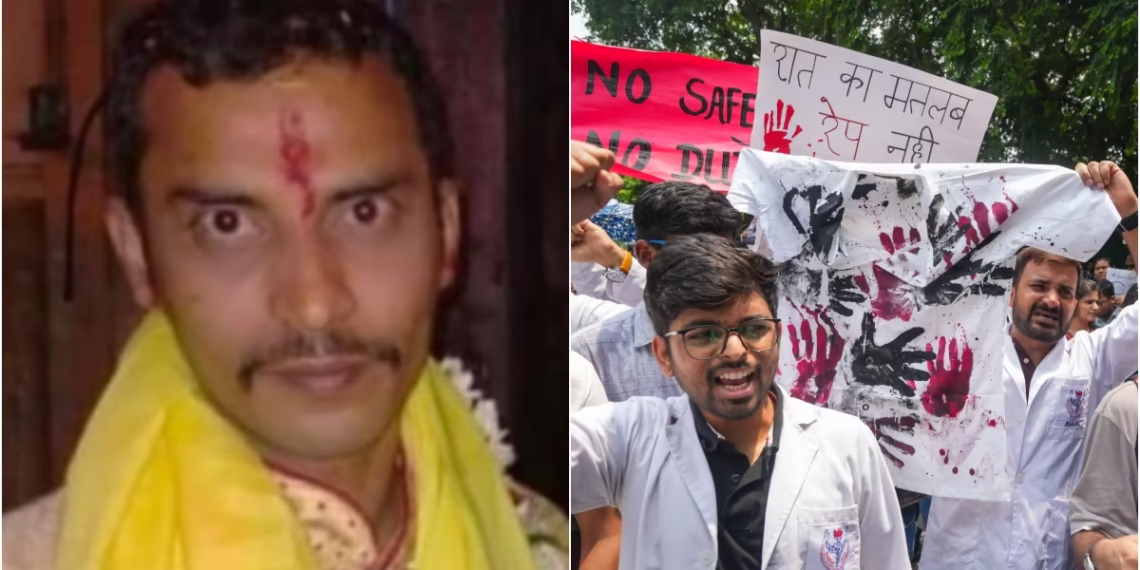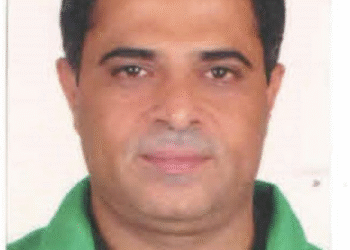The psychological profile of Sanjay Roy paints him as a “sexual pervert with animal-like instincts,” with a history of domestic abuse and disturbing personal behavior. The 33-year-old civic volunteer was arrested after the murder of a 31-year-old doctor in Kolkata, and the evidence against him continues to mount as the case unfolds.
BY PC Bureau
Sanjay Roy, who was convicted on Saturday in connection with the rape and murder of a 31-year-old postgraduate trainee doctor at RG Kar Medical College and Hospital in Kolkata, is a 33-year-old civic volunteer with the Kolkata Police’s disaster management force.
Roy had been posted at a police outpost near the medical college.
Described as a “sexual pervert with animal-like instincts,” Roy exhibited no remorse during his psychoanalytic profiling conducted by the Central Bureau of Investigation (CBI).
Prior to the incident, he had a history of domestic abuse, with his wife lodging multiple assault complaints against him, to which police reportedly took no action.
ALSO READ: RG Kar horror: CBI case built on forensics and eyewitnesses
Additionally, Roy was known to have been married four times and had a penchant for watching disturbing and violent pornography.
The crime occurred on August 9, 2024, when the victim was found dead with multiple injuries in a seminar room at the hospital. Roy was identified as the prime suspect through CCTV footage and a torn earphone found at the scene. Following his arrest, he initially confessed to the crime.
The incident sparked widespread protests across India, with medical professionals demanding improved safety measures and legal protections.
VThe trial commenced in November 2024, with Roy pleading not guilty and claiming he was being framed. The proceedings are ongoing, with the CBI seeking the death penalty for Roy.
The Evidence Against Sanjay Roy
ALSO READ: Judgement day in the RG Kar rape-and-murder case
- CCTV Footage: Roy was identified through security camera footage, which showed him entering the hospital’s seminar room where the victim was found lifeless. The footage captured his movements before and after the crime, showing his presence at the crime scene, which made him a prime suspect.
- Physical Evidence: Investigators found a torn earphone at the crime scene, which later linked it to Roy. The earphone was traced back to him, as it was a piece of personal property he had been seen using prior to the incident. Additionally, DNA evidence collected from the victim’s body and the crime scene matched Roy’s profile, strengthening the case against him.
- Confession During Interrogation: Roy initially confessed to the crime during police interrogation. He admitted to having lured the victim into the seminar room under the guise of needing assistance and then brutally assaulting her. However, during later interrogations, Roy retracted his confession, claiming he was coerced by the authorities. He insisted that he was being framed.
- Psychological Profile: After his arrest, Roy underwent psychological evaluation by the Central Bureau of Investigation (CBI). The analysis revealed Roy’s disturbing tendencies. The profile painted him as a “sexual pervert with animal-like instincts,” suggesting that his actions were driven by deep-seated psychological issues. He was reported to have a history of domestic abuse, with his wife lodging multiple assault complaints against him, but no significant action had been taken by the authorities.
- Disturbing Personal History: Roy’s background also added to his notoriety. He had been married four times and had a well-documented history of violent behavior. He was known to watch disturbing, violent pornography, which some investigators believed may have influenced his behavior. His personal history and unstable relationships were key factors in the investigation.
His Claims During Interrogation
When questioned by the CBI, Roy initially admitted to the crime, expressing remorse. However, his statement later became inconsistent, with Roy claiming that he had been pressured into making a confession. He suggested that the police had fabricated evidence against him. This retraction was met with skepticism from investigators, who pointed to the overwhelming physical and forensic evidence.
The Question of Protection
Throughout the investigation, there were allegations that Roy had been shielded by influential figures, which delayed his arrest and the proper investigation of the crime. Some reports suggested that Roy’s connections within the local police force may have played a role in his initial protection. He was reportedly able to evade immediate scrutiny after the crime, despite being in the vicinity of the incident. Some sources claimed that hospital officials and local authorities delayed taking action, possibly to avoid negative publicity for the hospital and to protect their own interests.
There was also speculation that political pressures may have played a role in delaying the investigation and arrest. Local leaders were reportedly cautious about pushing for a quick resolution to avoid stirring unrest, given the sensitive nature of the case and the fact that the victim was a medical professional.
Public Outrage and the Demand for Justice
The case sparked nationwide outrage, particularly among medical professionals and students, who demanded justice for the victim and called for stricter safety measures in hospitals. The lack of timely action, as well as the apparent delay in Roy’s arrest, led to protests and calls for accountability at all levels.
As the trial continues, the CBI is seeking the death penalty for Roy, given the horrific nature of the crime. The case remains a focal point in the broader discussions surrounding violence against women in India and the inadequacies in the systems meant to protect them. The victim’s family and colleagues continue to demand justice, and the public’s pressure has led to heightened scrutiny of how the case was handled, particularly in the early stages.
Sanjay Roy, the prime accused in the RG Kar Hospital rape and murder case, has been at the center of a horrific crime that has shaken the medical community and the entire nation. While the evidence against him appears overwhelming, the question of who shielded him, at least in the initial stages, remains a matter of concern. As the trial progresses, the focus will be not only on delivering justice to the victim and her family but also on examining the failures in the system that allowed this tragedy to occur in the first place.












